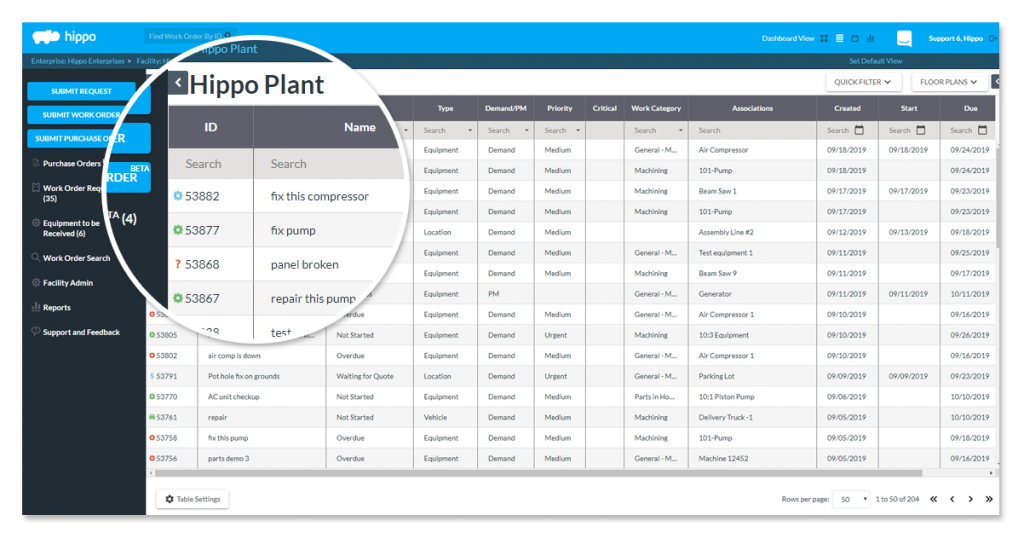Case studies: Real-world examples of successful CMMS implementation for Dummies

Combining IoT with your existing CMMS unit: Pros and disadvantages
In the world of production, upkeep is important to making sure dependable and efficient procedures. Electronic upkeep control bodies (CMMS) have long been utilized to automate the monitor of upkeep activities, supply monitoring, and work purchases. Having said that, with the introduction of the World wide web of Things (IoT), there is actually an option to take CMMS to the upcoming level by incorporating IoT record streams in to these bodies.
Learn More Here of IoT along with CMMS may give a riches of advantages for suppliers appearing to optimize their routine maintenance operations. However, there are actually also potential drawbacks that need to be considered before getting started on an assimilation venture. In this message, we will definitely explore both the pros and disadvantages of combining IoT with your existing CMMS unit.
Pros:
1. Real-time keeping track of
One of the most significant advantages of incorporating IoT into your CMMS body is real-time monitoring. Sensors can easily be released throughout your center to track everything from temperature level and humidity levels to maker functionality metrics such as speed, vibration or electricity usage.
With this record streaming directly right into your CMMS system in real-time, you may promptly determine prospective issues before they come to be significant issues. This aggressive strategy may aid you lower down time and raise efficiency through enabling quick repair services or replacements.
2. Predictive Maintenance
Through examining historical record gathered from sensors put in throughout your facility over opportunity, it’s achievable for anticipating algorithms within the connected IoT units to forecast when machines are going to demand maintenance or replacement parts.
This type of anticipating routine maintenance lessens unexpected recovery time while optimizing production effectiveness by reducing reactive repairs after devices failing leading eventually towards longer maker life patterns.
3. Strengthened decision-making
The combination between IoT tools and a CMMS supplies a wealth of information that can be analyzed making use of analytics software application resources like synthetic knowledge (AI) engines or equipment finding out algorithms.
Through mapping sensing unit record against other variables tracked within your company's database like supply levels or job orders, you can easily obtain understandings that assist optimize your servicing processes. The data from these devices may present you the most essential areas of your location that need interest and supply a more significant understanding of why devices break down.
4. Greater flexibility
Incorporating IoT gadgets with CMMS offers a much higher amount of versatility in terms of servicing scheduling, tracking inventory degrees, and work order control.
For instance, you can established up alerts to alert servicing experts when tools is as a result of for solution or when supply amounts are reduced. This approach minimizes unnecessary recovery time while ensuring that your amenities has actually the best parts on hand when they are required.
Disadvantages:
1. Price
The expense of incorporating IoT devices in to an existing CMMS unit may be sizable. The sensors and other hardware required to monitor devices and accumulate data need to be acquired, installed, and preserved over opportunity.
Additionally, brand new software application need to have to be included to study the information collected through these sensing units which may require employing added skilled staffs or experts.
2. Data Security
An additional prospective disadvantage of including IoT gadgets with a CMMS unit is data safety issues encompassing the assortment and handling of delicate relevant information such as device efficiency metrics or supply levels.
To make sure that this data stays safe and secure from unauthorized access or hacking attacks needs implementing proper safety action like shield of encryption procedures or firewalls which adds additional expense over time.
3. Combination Complexity

Combining IoT tools with an existing CMMS unit can easily be a complicated procedure that requires considerable technical know-how in both hardware installment and software application development.
This difficulty indicates that not all facilities will possess the information essential to embark on such ventures leading in the direction of reliance on exterior vendors or specialists which includes further price in phrases of fees for their services over time.
Conclusion
While there are actually surely pros and downsides to integrating IoT devices with your existing CMMS unit, it's crystal clear that suppliers who choose to embark on on this journey are going to benefit coming from improved decision-making functionalities, real-time display capabilities along with anticipating servicing that may minimize unplanned recovery time while making best use of creation effectiveness.
Nonetheless, the expense connected along with equipment, software application and security have to be carefully evaluated against the potential benefits to identify whether such integration is appropriate for your center. Ultimately, it's up to each manufacturer to determine what is absolute best for their procedures based on their unique targets and sources accessible.
